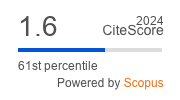Malaysian Journal of Mathematical Sciences, May 2016, Vol. 10, No. 2
Modeling Bangladesh's Gross Domestic Product Using Regression Approach
M. N. Hasan, Sohel Rana, M. B. Malek, K. R. Das, and N. Sultana
Corresponding Email: sohel_rana@upm.edu.my
Received date: -
Accepted date: -
Abstract:
This study finds the factors that affect Bangladesh's Gross Domestic Product (GDP) through regression approach. Stepwise and Ridge regression techniques have been applied to build the suitable regression model. Model adequacy also has been checked and multicollinearity problem is addressed for a plausible model using appropriate remedial measures for each of the model one after another that yields stepwise regression. The multicollinearity problem has also been tried to combat by ridge regression. Finally, the model which is adequate and free from multicollinearity problem after applying the ridge regression has been considered as the credible model for predicting the GDP of Bangladesh. The final model shows that the factors population, imports of goods and services, agriculture value added, manufacturing value added and labor force are positively affecting the GDP of Bangladesh.
Keywords: Model adequacy, Multicollinearity, Backward elimination, Ridge regression, Variance inflation factors, Ridge trace









